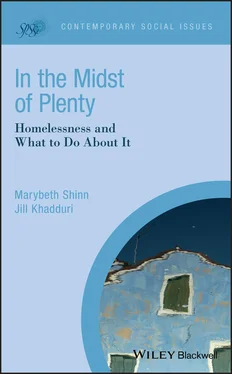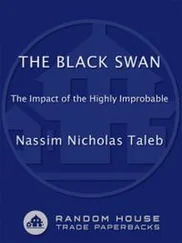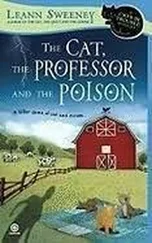To illustrate, we return to the typologies of homelessness for individuals and families and focus on Philadelphia, where researchers matched records of shelter use to records of treatment for substance abuse (Culhane et al., 2007; Kuhn & Culhane, 1998). For individuals, fewer than 10% of people who entered shelter were long stayers, but they used just over half of the shelter days. That means that, on any given day, one would be likely to find that just over half of the shelter residents were long‐term users, and the long stayers and episodic users of shelters had more problems such as substance abuse than the transitional (short‐stay) shelter users. Among all individuals who entered shelter over 28 months, 37% reported substance problems, and 29% had received substance abuse treatment from a publicly funded source. If a cross‐sectional survey had used records for the same Philadelphia shelters, it would likely have found 54% with self‐reports of substance problems and 33% with treatment records.
As we noted earlier, studies of people in the midst of an episode of homelessness arguably catch them at the worst point in their lives. Returning to housing can reduce mental health and substance problems. This point is illustrated by the Family Options Study of housing and service interventions for homeless families, which we will discuss more in Chapter 3on how to end homelessness for people who experience it. That study found that as families began to stabilize, rates of serious psychological distress, alcohol dependence, and drug abuse went down (Shinn, Gubits, & Dunton, 2018). Further, giving families offers of ongoing rental subsidies that held their housing costs to 30% of their income not only ended homelessness for many but also reduced their rates of psychological distress, substance use, and experiences of domestic violence compared to families who received the usual care available in their communities (Gubits et al., 2015, 2016). Distress and substance abuse, like homelessness itself, are not permanent traits, but instead states that can be influenced by environmental circumstances. Just as hardship and shelter rules can shape family composition, hardship and homelessness can sometimes precipitate psychological distress or substance abuse. Although addictions lead some people into homelessness, others do not hit the bottle until they hit the street. And at least for families, housing is an important mental health “treatment.”
Some observers consider the challenges faced by people experiencing homelessness as a sufficient explanation for that state. Often these observers focus on challenges they may consider moral failings such as substance abuse. But the logic is faulty. College students have high rates of substance abuse; as with homeless adults, the favored substance is alcohol. But observers rarely claim that young people become college students because of their substance abuse. Some college students do in fact become homeless, but it is poverty and food insecurity rather than substance abuse that distinguishes them from their peers (Broton & Goldrick‐Rab, 2018). More nuanced explanations are necessary. Chapter 2analyzes causes of homelessness.
In this book, we focus on literal homelessness—staying in a place not intended for people to sleep (unsheltered homelessness) or in a shelter or transitional housing program for homeless people (sheltered homelessness). Broader definitions would include more people.
Relying largely on two sources of information—point‐in‐time counts conducted by all communities across the country on a single night in January and data from shelter records from those same communities over the course of a year, we examine people in five overlapping groups developed to help governments and social service systems respond to homelessness: families with children, adults without children, youth, veterans, and people with chronic patterns of homelessness. We note that seemingly basic distinctions are often shaped by service systems, such as family shelters that do not admit men. More men than women experience homelessness in the U.S., infancy is the age at which a person is most likely to be found in a homeless shelter, and African Americans and Native Americans are at especially high risk.
The face of homelessness has changed over time, both in the run‐up to the modern era of homelessness when younger people, including women and minorities, replaced older white men, and in the past decade when social policies have led to a reduction in homelessness, especially for veterans and people with chronic patterns. In the past decade we have also seen that single adults who experience homelessness are getting older.
We estimate the total number of people experiencing literal homelessness over a day (600,000), a year (1.6 million) and a lifetime (over 7.4% of the entire population, based on a telephone survey from 1990—and nearly twice that percentage if we include precarious housing). The numbers are much larger over longer time periods because most people who experience homelessness do so only briefly and then return to housing. Understanding this fact leads to multiple points of intervention to prevent people from becoming homeless and to help them return to housing.
Finally, we examine the challenges people who experience homelessness face. A PIT count may exaggerate those challenges, for several reasons. First, people with more challenges may have trouble extricating themselves from homelessness, so are more likely than those with fewer challenges to be surveyed on any particular date. Second, people's challenges depend in part on their circumstances and can be reduced by restoring them to housing.
1 1These examples are from a study of people who entered programs for homeless people called rapid re-housing. Sponsored by the U.S. Department of Housing and Urban Development, the study interviewed people at length in late 2018 and early 2019 (Jefferson, Thomas, Khadduri, & Mahathey, 2019). Authors Anna Jefferson and Hannah Thomas helped us add to the information that appears in that report, based on the transcriptions of the interviews.
2 2When the telephone survey in 1990 (Link et al., 1994) included people who said they slept in a friend's or relative's home because they were homeless, the number rose to 1 in 7 adult Americans. Although respondents labeled themselves as homeless, Rossi and HUD would classify them as precariously housed.
3 3HUD makes some exceptions for “imminent” homelessness in determining eligibility for its homeless assistance programs, but does not include imminently homeless people in its tallies of those experiencing homelessness, Examples are people fleeing domestic violence with neither a place to go nor resources to find one and people with chronic disabilities who have moved twice or more in the past two months (U.S. Department of Housing and Urban Development, 2018a).
4 4Alaska, Connecticut, Iowa, Maine, Michigan, Minnesota, Nebraska, New Jersey, Washington, West Virginia, Wisconsin, Wyoming, and Vermont.
5 5Both of these offer temporary shelter and typically some supportive services.
6 6The Department of Education reports that 1,300,957 students aged 3 through grade 12 who were enrolled in public school or preschool programs met its larger definition of homelessness in the 2015–2016 school year; that estimate excludes children too young to enroll in school, as well as adults without children (Henry, Bishop, et al., 2018).
7 7Participating sites were: Alameda County, CA; Atlanta, GA; Baltimore, MD;, Boston, MA; Bridgeport, New Haven, Norwalk, Stamford and Fairfield County, CT; Denver, CA; Honolulu, HI; Kansas City, MO; Louisville, KY; Minneapolis, MN; Phoenix, AZ; and Salt Lake City, UT.
8 8Quotations in this section are from the Family Options Study and were previously published in (Shinn, Gibbons-Benton, & Brown, 2015).
Читать дальше












